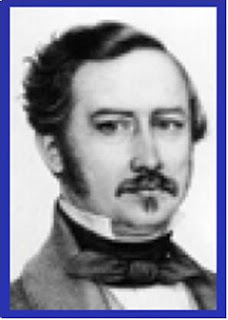Students of soil science are taught that to determine the amount of soil organic matter, soil organic carbon is measured usually by wet oxidation using potassium dichromate (called Walkley-Black method) or in well-equipped laboratories, using CN analyser and then multiplied by a conversion factor of 1.72 or 1.724. Most textbooks and laboratory manuals do not explain how this factor was obtained, so students generally accept the value without any question just like they do with other constants used in natural sciences.
Origin of the conversion factor
The conversion factor has a very long history and has practically survived the test of time and modern analytical methods. It is about 150 years old. It was based on studies in the 1820s by the famous agricultural chemist, Carl Sprengel of Goettingen University, that organic matter contains 58 percent carbon. But it was another leading agricultural chemistry pioneer, Emil Wolff from Hohenheim, who introduced the value of 1.724 in 1864. Since then this conversion factor has become universal despite the many later studies showing that it is too low for most soils and that a value of 2.0 is more accurate (Pribyl, 2010). When I was doing my masteral thesis at IRRI in the late 1980s, Dr. H.U. Neue, the head of the Soils Department and a leading expert on organic matter of submerged soils, required us to use a factor of 2.0.
 |
| Oldest records of the conversion factor (Source: Pribyl, 2010) |
In an excellent review about this conversion factor, Pribyl (2010) concluded that convenience, authority and tradition rather than strength of evidence are in large part the reason for the widepsread acceptance of the conversion factor until now. However, this may be a controversial conclusion for other soil scientists in some countries. In France for instance, analytical laboratories use the factor of 1.72 or 2.0. The former (i.e. 1.72) is better suited for cultivated horizons while the latter (i.e. 2.0) is more appropriate for forest topsoils (Baize, 1988).
Dr. Emil von Wolff (30 Aug 1818-26 Nov 1896) was a professor of chemistry and agricultural chemistry at the Hohenheim Academy of Agriculture and Forestry in Stuttgart, Germany (since 1967 named University of Hohenheim) from 1853 to 1894. Wolff was one of the agricultural chemistry pioneers who made major contributions to its development and to that of soil science, plant science and animal science.
 |
| Prof. Emil Wolff (Source: Hohenheim Univ) |
Emil von Wolff started his studies in medicine at Kiel University in northern Germany but later shifted to natural science which he finished in Berlin. He obtained his PhD in 1843 in Berlin a year after Justus von Liebig published his most important book on agricultural chemistry. This probably infuenced him to focus his teaching and research on soil and plant chemistry as well as on the composition of organic substances including foods. He wrote several books among which were the “Textbook of Agricultural Chemistry (1847)” and “Ash Analysis of Agricultural Products (1877).
Wolff belonged to the most influential and highly regarded agricultural scientists of the 19th century and had no doubt contributed to the fame of the Hohenheim school. It is thus a fitting tribute that an important street at the heart of the Hohenheim University campus bears his name: Emil-Wolff-Strasse (Emil Wolff street).
Baize D. 1988. Soil Science Analyses. John Wiley & Sons, Chichester.
Leisewitz, C. 1910.Wolff, Emil von. In: Allgemeine Deutsche Biographie 55 (1910), S. 115-117 [Onlinefassung]; URL: http://www.deutsche-biographie.de/pnd115599533.html?anchor=adb
Pribyl D.W. 2010. A critical review of the conventional SOC to SOM conversion factor. Geoderma 156: 75-83